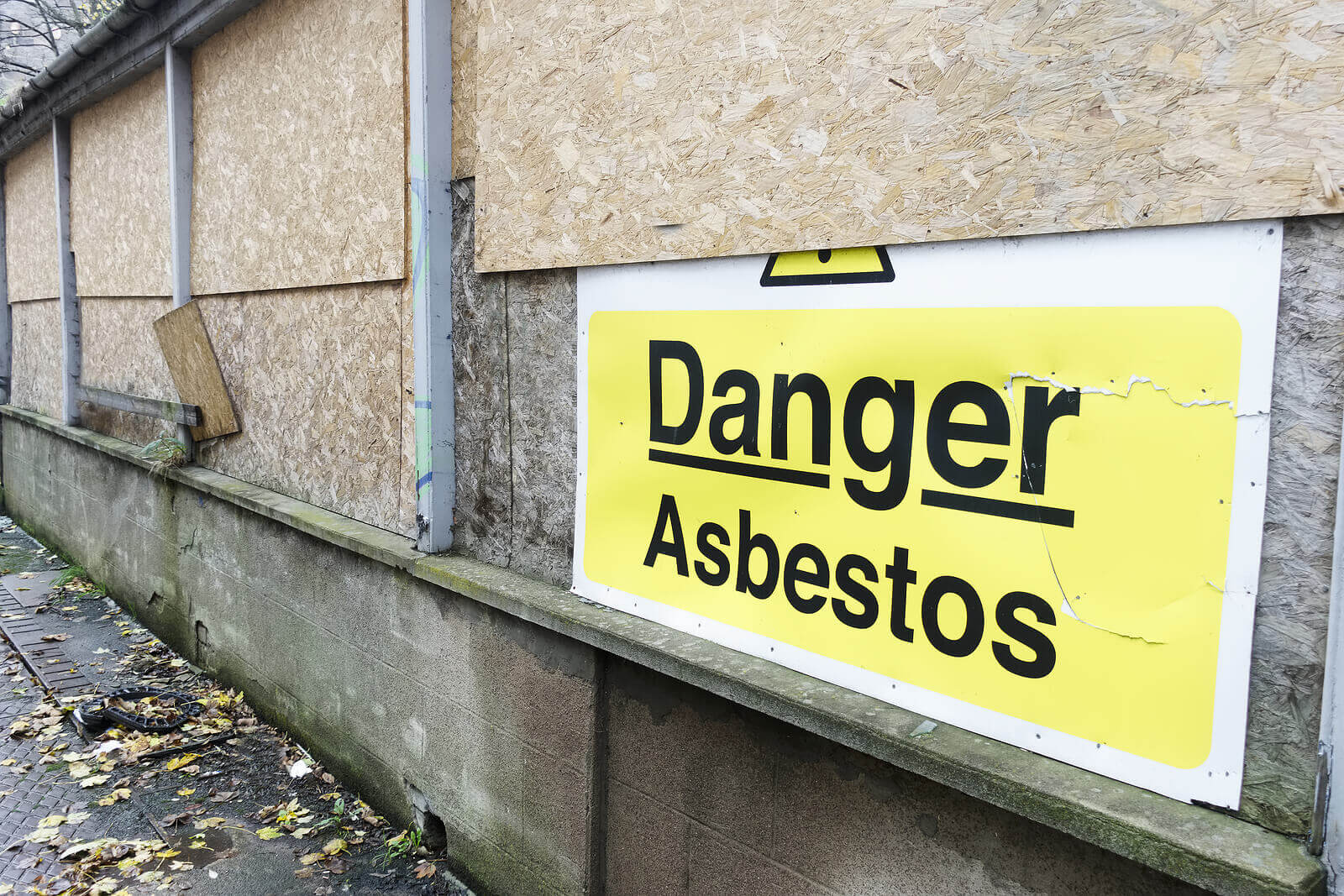Asbestos is the UK’s biggest workplace killer, causing over 5,000 deaths annually from related diseases. This staggering toll persists despite a 1999 asbestos ban, showing the lasting impact of this material.
While most cases stem from legacy exposure, the danger is still present. Asbestos becomes hazardous when poorly managed, damaged, or disturbed. Workers in older buildings — especially those who maintain, repair, or demolish pre-2000 structures — remain at risk.
Join us as we explore asbestos’s threat to human health, how to identify it, and what to do if you find it on-site.
What is asbestos?
Let’s first look at what asbestos is. It’s a group of naturally occurring fibrous minerals that form through crystallisation. These highly durable fibres resist heat, fire, water, chemicals, and biological degradation, making asbestos versatile but hazardous. There are two main types of asbestos: serpentine and amphibole.
Serpentine asbestos, also known as chrysotile (white asbestos), was the most used type before the ban.
Amphibole asbestos includes amosite (brown asbestos), crocidolite (blue asbestos), tremolite, anthophyllite, and actinolite. This group poses the greatest health risk, with crocidolite being the most commonly used.
Asbestos’s unique properties made it a popular construction material during the Industrial Revolution and beyond. Workers used it pre-ban for insulation, boilers, pipes, floor tiles, and asbestos cement — common in roofing sheets and pipes.
Asbestos exposure
When left undisturbed, asbestos is generally safe. However, damaged asbestos releases microscopic fibres into the air, posing a severe health risk if inhaled.
Construction workers face the highest risk of asbestos exposure due to its historical widespread use in buildings. The danger is particularly heightened during activities like:
- demolition or refurbishment of older structures
- drilling or cutting into walls, ceilings, and floors
- installation of equipment, like smart meters.
How dangerous is asbestos?
While the air we breathe contains trace levels of asbestos, these are not typically harmful. However, prolonged or heavy exposure to asbestos is dangerous. Inhaling the microscopic fibres can cause severe health problems over time, including:
- lung cancer
- mesothelioma (a cancer of the lining of the lungs or abdomen)
- asbestosis (a chronic lung disease)
- pleural disorders (thickening or scarring of lung linings).
These illnesses often take decades to develop, and many patients die within two years of diagnosis. The leading cause is regular workplace exposure over months or years. But a single heavy exposure can also be life-threatening.
For construction employers, managing asbestos risk is a legal and moral responsibility. You must ensure the following:
- Identify the presence of asbestos as part of your risk assessment of each work site. Check construction plans, asbestos surveys, and registers.
- Train all relevant staff on asbestos awareness. They must be aware of the risks and how to prevent contamination. You can conduct this training in-house or through professional providers.
How to identify asbestos
Risk assessments, construction plans, asbestos surveys, and registers will identify more obvious on-site asbestos risks. However, despite these checks, asbestos can still be present.
Identifying asbestos through visual inspection alone presents significant challenges as it isn’t easily recognisable. Pay particular attention if:
- the building was constructed before 2000
- your work includes disturbance of high-risk areas like insulation, drywall, pipes, ceiling tiles, roofing materials, and flooring.
The only definitive way to identify asbestos is through laboratory testing. If found, several important steps must be taken.
What to do if someone finds asbestos on site

If you find asbestos on-site, follow these critical steps to ensure safety and compliance:
- Stop work immediately: Stop all activities to prevent disturbing the asbestos.
- Clear the area: Anyone not wearing effective personal protective equipment (PPE) and respiratory protective equipment (RPE) must evacuate the site immediately.
- Notify affected individuals: Inform all relevant parties, including your team members, other site professionals, site or homeowners, and neighbours.
- Review asbestos documentation: Request the building’s asbestos register or survey for detailed information. If you plan to break into the building’s structure, you may need a refurbishment survey. Do not proceed until the necessary survey is completed and the results are available.
- Identify the source of asbestos release: Find the source and assess its potential impact.
- Test the material: Contact an accredited asbestos testing laboratory to analyse a sample.
- If the sample doesn’t contain asbestos, work may continue.
- For low-risk asbestos, where fibres are tightly bound, work may proceed with safety measures.
- For high-risk asbestos with loose fibres or heavy contamination, a licensed contractor must remove it.
7. Conduct a health and safety risk assessment: Reassess the site to find a safe way to proceed.
8. Stay vigilant: After addressing the asbestos, remain wary. You may find more hidden asbestos.
Dispose of or seal the asbestos
It’s important not to ignore the problem. For safety and compliance, the found asbestos must be removed following the proper procedures. Site owners or their representatives must seal or remove asbestos.
Hire a professional asbestos removal company. The company will handle asbestos using HEPA vacuum cleaners, specialised tools, and wet-cleaning techniques. Workers will wear PPE and RPE and destroy them after use. Don’t remove the asbestos yourself without any previous experience or training.
As asbestos is hazardous waste, it must be handled with care. The company must dispose of it at a licensed asbestos disposal facility. They should contact the facility in advance to schedule a drop-off time. It should never be disposed of alongside general construction waste.
By following these steps, construction employers can reduce risks, protect health, and comply with laws when asbestos is found on-site. However, always check with the Health and Safety Executive (HSE) for the latest asbestos guidance.
